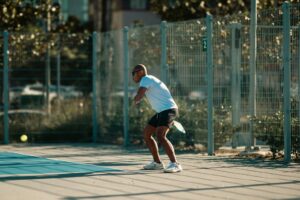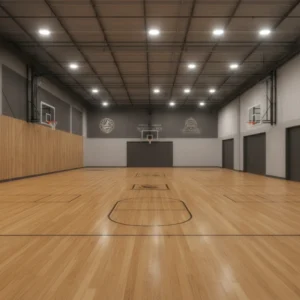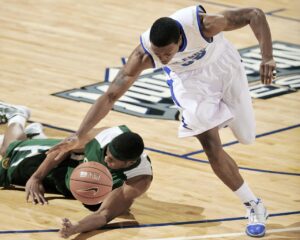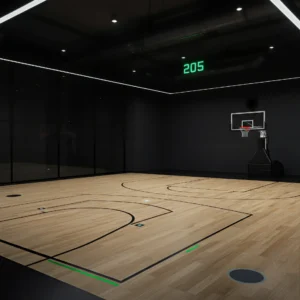Multi-sport courts are increasingly popular in recent years. They offer a versatile and engaging outdoor recreation option for many communities. So, they prove a great way to encourage physical activity and social interaction.
Constructing a multi-sport court provides the flexibility to enjoy a variety of sports and activities in one designated space. Whether it’s basketball, tennis, volleyball, or other sports, a well-designed multi-sport court offers convenience and versatility.
In this article, you will explore what a multi-sport court is and its benefits. We will also shed light on important considerations for building a multi-sport court. Also, we will discuss a reliable source that can help you to create a multiple-purpose court.
But first, let’s look at…
What Is A Multi-Purpose Court?
A multi-purpose court is also known as a multi-sport or all-sport court. It’s a versatile sports surface designed to accommodate various sports and activities. Hence, you can use it for sports such as basketball, volleyball, tennis, futsal, pickleball, and many more.
Multi-sport courts are typically made from materials like acrylic, rubber, or modular tiles. Furthermore, you can customize them to meet specific needs and preferences. As a result, they offer a convenient and cost-effective solution. Because you don’t need to invest in building separate courts or fields.
Now, let’s move to the next part of the discussion.
Things to Consider While Buiding a Multi Sport Court
Building a multi-sport court is not child’s play. It needs effort and investment. That’s why it’s important to consider the following factors while creating a multi-sport court. So the success of the project can be ensured.
- The type of surface that will suit your needs (such as asphalt, concrete, or synthetic turf)
- The desired size of the court (whether it will be regulation size or smaller)
- The location of the court, such as in a park, school, or community center.
- The project’s budget ensures that you are considering all the costs.
By taking into account these factors, you can ensure that your multi-sport court is safe, functional, and meets the needs of your community. Working with experienced professionals is also essential to ensure the completion of projects to high standards.
But, now let’s discuss which sports you can play on such multi-purpose courts.
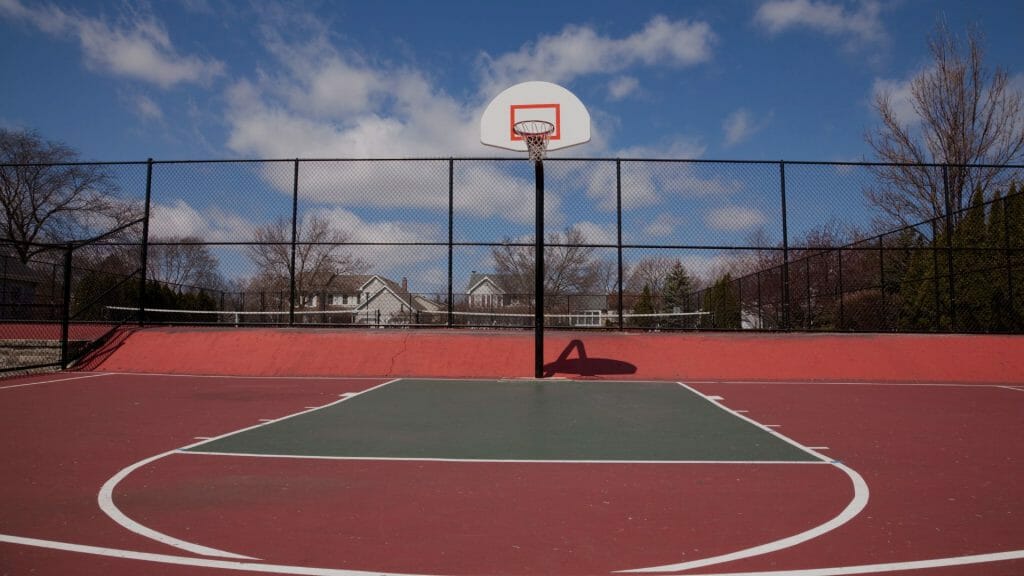
How Many Sports Can You Play On Multi-Sport Courts?
One of the key benefits of a multi-sport court is its versatility in accommodating a wide range of sports and activities. It accommodates a variety of sports, such as basketball, tennis, volleyball, futsal, badminton, pickleball, handball, and more.
But, the selection of the surface material depends on the sports that will be played on it. For example, a hard court surface is perfect for basketball, tennis, and volleyball. In contrast, a synthetic turf surface may be more appropriate for soccer or futsal.
Next, let’s dive into how a multi-sport court benefits a community.
How Can Multi-Sport Courts Benefit Your Community?
Having a multi-sport court in your community is beneficial in multiple ways, such as
Increased Physical Activity:
A multi-sport court can encourage people of all ages to get outside and engage in physical activity. Thus, promoting a healthier lifestyle.
Versatility:
A multi-sport court can accommodate a range of sports and activities. So, this versatility allows for a wider range of individuals to use and enjoy the space.
Cost-Effective:
It is more cost-effective and cost-efficient than building individual courts for each sport.
Socialization:
A multi-sport court can create a community gathering place. This way, it helps to encourage socialization and community engagement.
Accessibility:
You can design a multi-sport court to be accessible for individuals with disabilities. Therefore, playing a role in promoting inclusivity and equality within the community.
In a nutshell, having a multi-sport court in your community can promote physical activity, socialization, inclusivity, and a sense of community.
Let’s jump to the following discussion section about a multi-sport court.
Is There a Standard Size For Multisport Courts?
The dimensions of a multi-sport court will depend on the specific sport. However, here are the standard dimensions of some popular sports:
Tennis Courts:
A regulation-size tennis court measures 78 feet long and 36 feet wide, with a net that is three feet high.
Pickleball Courts:
The dimensions of a pickleball court are 44 feet long and 20 feet wide. Therefore, a regular size tennis court can position up to four pickleball courts.
Basketball Courts:
The dimensions of a full-size basketball court are 94 feet long and 50 feet wide. Also, a centerline featuring free-throw and three-point lines divides it in half. And a half-court is 47 feet long and 50 feet wide.
Badminton Courts:
A badminton court is 44 feet long and 20 feet wide, divided by a five-foot-high net.
A multi-sport court that accommodates these sports should be at least 94 feet long and 50 feet wide. The most common configuration is a full-size tennis court with four pickleball courts and a half-court basketball setup.
In short, all these measurements need the help of sports flooring professionals. This is where Copo Sports comes in.
Copo Sports – Pave Your Best Multi-Sport Court With Experienced Professionals
Connecting with experienced professionals to pave out the best multi-sport court is essential. Otherwise, all the efforts and investments will go in vain. Copo Sports is a leading sports flooring company with the aim to reshape the industry.
They make all multi-sports court flooring systems with expert structural engineering. Also, they take care of players’ health and safety in all possible ways while building a multi-sport court. Thus they offer safe yet competitive sports court surfaces.
Whether you are looking for outdoor or indoor or multi-sport court flooring, Copo Sports is an ideal choice.
Once you have completed your project with the help of experienced professionals, maintaining a multi-sport court is also important.

What Is Maintenance Required To Keep A Multi-Sport Court In Good Condition?
The types of surfaces you select will determine the maintenance needed for a multi-sport court. For example, asphalt and concrete courts will require resealing every few years to shield against weather-related harm.
Synthetic turf courts must be cleaned and brushed regularly to prevent debris accumulation. Moreover, all multi-sport courts should be periodically assessed for cracks or other damages. So the players can enjoy good play without any fear of injury.
Now, let’s conclude our discussion.
Conclusion
In conclusion, building a multi-sport court can be an exciting and valuable addition to any community. You can ensure your multi-sport court is functional by considering surface type, court dimensions, location, budget, and maintenance factors.
Connecting with an experienced sports flooring company, you can also ensure it is safe and enjoyable for everyone using it. With careful planning and proper upkeep, a multi-sport court can provide endless fun and fitness for athletes of all ages and skill levels.
FAQs
What size is a multi purpose sports court?
The size of a multipurpose sports court can vary depending on its intended use and regulations. However, a common size for a multipurpose sports court is approximately 84 feet in length and 50 feet in width. This size allows for various sports such as basketball, volleyball, and tennis to be played on the same court with proper markings and dimensions.


